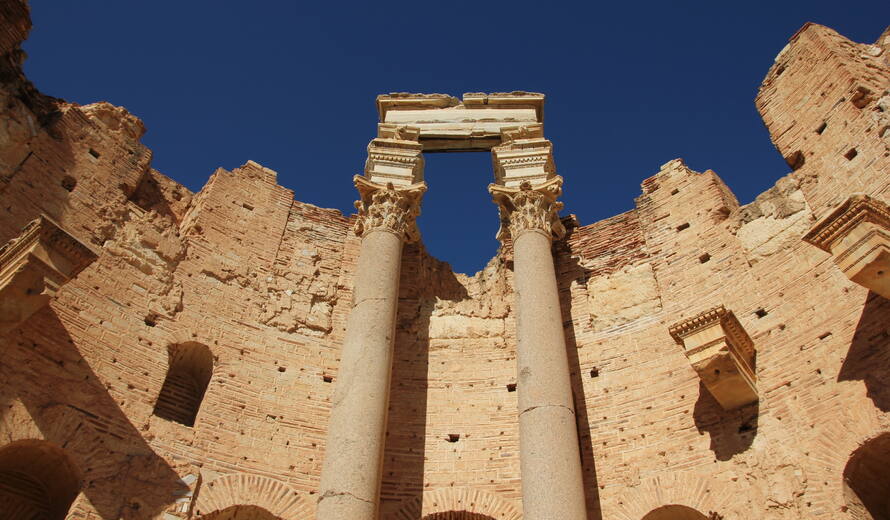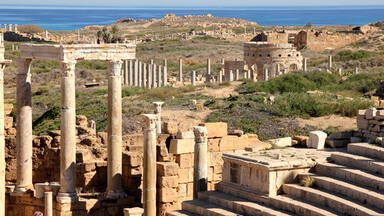Director-General urges military forces engaged in Libya to refrain from endangering cultural heritage
The Director-General of UNESCO, Irina Bokova, today called on both Libya and the coalition of States implementing a no-fly zone over the country to respect the Hague Convention on the Protection of Cultural Property in the Event of Armed Conflict (1954) and its two (1954 and 1999) Protocols, as appropriate, and keep military operations away from cultural sites.
Of the ten states that make up the coalition involved in the implementation of UN Security Council Resolution 1973 (Belgium, Canada, Denmark, France, Italy, Qatar, Spain, United Arab Emirates, United Kingdom and the United States of America) eight are party to the Convention (Belgium, Canada, Denmark, France, Italy, Qatar, Spain and the United States of America).
"From a cultural heritage point of view, [Libya] is of great importance to humanity as a whole," said the Director-General in a letter to the Permanent Representatives to UNESCO of each of the countries concerned.
"Several major sites bear witness to the great technical and artistic achievements of the ancestors of the people [of Libya], and constitute a precious legacy," said Irina Bokova.
Article 4 of the 1954 Hague Convention notably provides that "[t]he High Contracting Parties (States) undertake to respect cultural property situated within their own territory as well as within the territory of other High Contracting Parties by refraining from any use of the property and its immediate surroundings or of the appliances in use for its protection for purposes which are likely to expose it to destruction or damage in the event of armed conflict; and by refraining from any act of hostility, directed against such property."
Libya's cultural heritage includes five sites inscribed on UNESCO's World Heritage List. They are:
- Old Town of Ghadamès - Known as 'the pearl of the desert', Ghadames stands in an oasis. It is one of the oldest pre-Saharan cities and an outstanding example of a traditional settlement.
- Rock-Art Sites of Tadrart Acacus - On the borders of Tassili N'Ajjer in Algeria, also a World Heritage site, this rocky massif has thousands of cave paintings in very different styles, dating from 12,000 B.C. to A.D. 100. They reflect marked changes in the fauna and flora, and also the different ways of life of the populations that succeeded one another in this region of the Sahara.
- Archaeological Site of Cyrene - Established as a Roman province in 74 BC, Cyrenaica shared in the fortunes of the empire and, as such, never ceased to play a preponderant role in the Mediterranean world: it was given by Mark Anthony to Cleopatra, united with Crete by Augustus, who decreed the date of the battle of Actium (34 BC) as the beginning of a new era, and then separated from Crete by Diocletian in a reform of 305, which united it with Egypt.
- Archaeological Site of Leptis Magna - Founded in the first millennium B.C, Leptis Magna is a unique artistic realization in the domain of urban planning.
- Archaeological Site of Sabratha - A Phoenician trading-post that served as an outlet for the products of the African hinterland, Sabratha was part of the short-lived Numidian Kingdom of Massinissa before being Romanized and rebuilt in the 2nd and 3rd centuries A.D.
The Director-General drew the attention of the States engaged in Libya to the fact that UNESCO, in keeping with Article 23 of the Convention, stands ready to play its part concerning the protection of cultural property.

